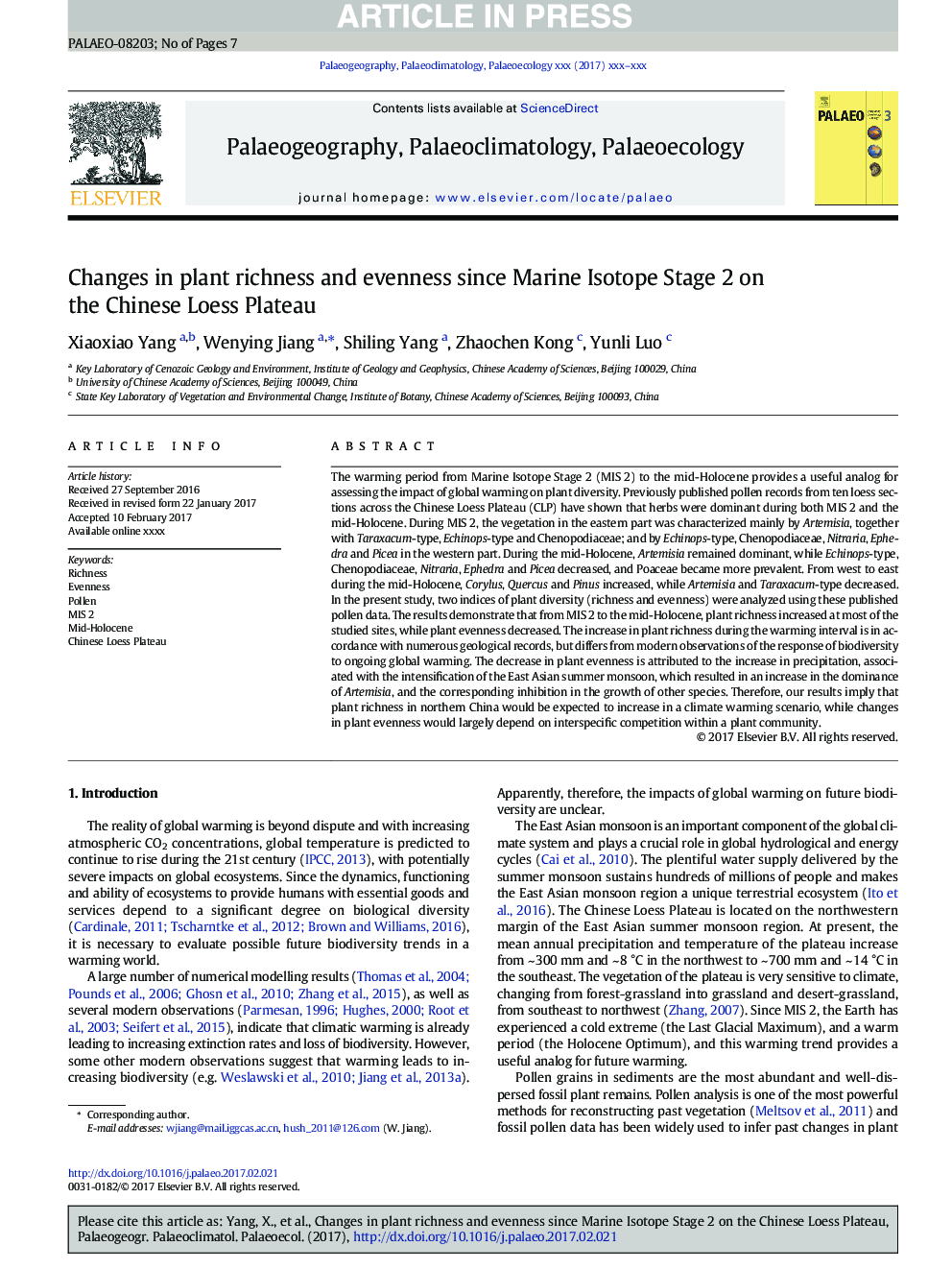| Article ID | Journal | Published Year | Pages | File Type |
|---|---|---|---|---|
| 10223634 | Palaeogeography, Palaeoclimatology, Palaeoecology | 2018 | 7 Pages |
Abstract
The warming period from Marine Isotope Stage 2 (MIS 2) to the mid-Holocene provides a useful analog for assessing the impact of global warming on plant diversity. Previously published pollen records from ten loess sections across the Chinese Loess Plateau (CLP) have shown that herbs were dominant during both MIS 2 and the mid-Holocene. During MIS 2, the vegetation in the eastern part was characterized mainly by Artemisia, together with Taraxacum-type, Echinops-type and Chenopodiaceae; and by Echinops-type, Chenopodiaceae, Nitraria, Ephedra and Picea in the western part. During the mid-Holocene, Artemisia remained dominant, while Echinops-type, Chenopodiaceae, Nitraria, Ephedra and Picea decreased, and Poaceae became more prevalent. From west to east during the mid-Holocene, Corylus, Quercus and Pinus increased, while Artemisia and Taraxacum-type decreased. In the present study, two indices of plant diversity (richness and evenness) were analyzed using these published pollen data. The results demonstrate that from MIS 2 to the mid-Holocene, plant richness increased at most of the studied sites, while plant evenness decreased. The increase in plant richness during the warming interval is in accordance with numerous geological records, but differs from modern observations of the response of biodiversity to ongoing global warming. The decrease in plant evenness is attributed to the increase in precipitation, associated with the intensification of the East Asian summer monsoon, which resulted in an increase in the dominance of Artemisia, and the corresponding inhibition in the growth of other species. Therefore, our results imply that plant richness in northern China would be expected to increase in a climate warming scenario, while changes in plant evenness would largely depend on interspecific competition within a plant community.
Related Topics
Physical Sciences and Engineering
Earth and Planetary Sciences
Earth-Surface Processes
Authors
Xiaoxiao Yang, Wenying Jiang, Shiling Yang, Zhaochen Kong, Yunli Luo,
